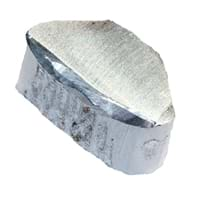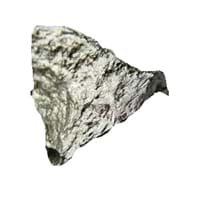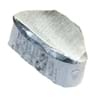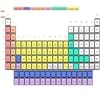Aluminium vs Manganese
Periodic Table
Symbol
Al
Mn
Group Number
13
5
7
11
Period Number
3
4
Block
p block
d block
Element Family
Post-Transition
Transition Metal
CAS Number
7429905
99+
7439965
99+
Space Group Name
Fm_ 3m
I_ 43m
Space Group Number
225.00
2
217.00
4
Facts
Interesting Facts
- Aluminum’s abundance percentage is more as it is found in more than 260 minerals.
- Pure Aluminum always reacts with oxygen rapidly.
- It is a good conductor of heat and electricity and used in transmission lines.
- Manganese is an essential trace element in all forms of life.
- Manganese metal oxidizes very easily, but it does not fuse that easily.
Sources
By Electrolysis Process, Earth's crust, Mining
Found in Minerals, Mining, Ores of Minerals
History
Who Discovered
Hans Christian Oersted
Johann Gottlieb Gahn
Discovery
In 1825
In 1774
Abundance
Abundance In Universe
5 * 10-3 %
5
8 * 10-4 %
8
Abundance In Sun
~0.006 %
5
~0.001 %
8
Abundance In Meteorites
0.91 %
5
0.27 %
8
Abundance In Earth's Crust
8.10 %
1
0.11 %
8
Abundance In Oceans
0.00 %
6
0.00 %
13
Abundance In Humans
0.00 %
10
0.00 %
13
Uses
Uses & Benefits
- Aluminum is used in a various products; for example, cans, foils, kitchen utensils, window frames, beer kegs and aero plane parts, automobile parts, etc.
- This metal is very brittle hence it mostly not used as a pure metal, but its alloys are very useful
- Its alloy Manganese steel is extremely strong and used in railway tracks, safes, prison bars and riffle barrels.
Industrial Uses
Aerospace Industry, Ammunition Industry, Automobile Industry, Chemical Industry, Electrical Industry, Electronic Industry
Automobile Industry, Electrical Industry, Electronic Industry
Medical Uses
Dentistry, Pharmaceutical Industry, Surgical Instruments Manufacturing
NA
Other Uses
Alloys, Jewellery, Sculptures, Statues
Alloys
Biological Properties
Toxicity
Non Toxic
Toxic
Present in Human Body
Yes
Yes
In Blood
0.39 Blood/mg dm-3
9
0.08 Blood/mg dm-3
14
In Bone
27.00 p.p.m.
11
100.00 p.p.m.
8
Physical Properties
Melting Point
660.37 °C
99+
1,245.00 °C
37
Boiling Point
2,467.00 °C
99+
1,962.00 °C
99+
Appearance
Physical State
Solid
Solid
Color
Silvery Gray
Silver
Luster
Metallic
Metallic
Hardness
Mohs Hardness
2.75
13
6.00
6
Brinell Hardness
160.00 MPa
99+
196.00 MPa
99+
Vickers Hardness
160.00 MPa
35
Not Available
Speed of Sound
5,000.00 m/s
10
5,150.00 m/s
7
Optical Properties
Reflectivity
71.00 %
10
Not Available
Allotropes
No
No
α Allotropes
Not Available
Not Available
β Allotropes
Not Available
Not Available
γ Allotropes
Not Available
Not Available
Chemical Properties
Chemical Formula
Al
Mn
Isotopes
Known Isotopes
11
27
21
18
Electronegativity
Pauling Electronegativity
1.61
22
1.55
25
Sanderson Electronegativity
1.71
13
2.20
7
Allred Rochow Electronegativity
1.47
14
1.60
9
Mulliken-Jaffe Electronegativity
1.83
8
Not Available
Allen Electronegativity
1.61
20
1.75
15
Electropositivity
Pauling Electropositivity
2.39
32
2.45
29
Ionization Energies
1st Energy Level
577.50 kJ/mol
99+
717.30 kJ/mol
30
2nd Energy Level
1,816.70 kJ/mol
19
1,509.00 kJ/mol
39
3rd Energy Level
2,744.80 kJ/mol
38
3,248.00 kJ/mol
21
4th Energy Level
11,577.00 kJ/mol
3
4,940.00 kJ/mol
20
5th Energy Level
14,842.00 kJ/mol
2
6,990.00 kJ/mol
17
6th Energy Level
18,379.00 kJ/mol
2
9,220.00 kJ/mol
16
7th Energy level
23,326.00 kJ/mol
2
11,500.00 kJ/mol
16
8th Energy Level
27,465.00 kJ/mol
2
18,770.00 kJ/mol
5
9th Energy Level
31,853.00 kJ/mol
2
21,400.00 kJ/mol
6
10th Energy Level
38,473.00 kJ/mol
4
23,960.00 kJ/mol
9
11th Energy Level
42,647.00 kJ/mol
5
27,590.00 kJ/mol
10
12th Energy Level
Not Available
30,330.00 kJ/mol
10
13th Energy Level
Not Available
33,150.00 kJ/mol
11
14th Energy Level
Not Available
38,880.00 kJ/mol
10
15th Energy Level
Not Available
41,987.00 kJ/mol
13
16th Energy Level
Not Available
109,480.00 kJ/mol
1
17th Energy Level
Not Available
118,100.00 kJ/mol
2
18th Energy Level
Not Available
127,100.00 kJ/mol
3
19th Energy Level
Not Available
138,600.00 kJ/mol
4
20th Energy Level
Not Available
148,500.00 kJ/mol
6
21st Energy Level
Not Available
158,600.00 kJ/mol
6
22nd Energy Level
Not Available
172,500.00 kJ/mol
5
23rd Energy Level
Not Available
181,380.00 kJ/mol
5
Electrochemical Equivalent
0.34 g/amp-hr
99+
0.29 g/amp-hr
99+
Electron Work Function
4.28 eV
19
4.10 eV
25
Other Chemical Properties
Chemical Stability, Ionization, Radioactive Isotopes
Ionization, Radioactive Isotopes
Atomic Properties
Atomic Number
13
99+
25
99+
Electron Configuration
[Ne] 3s2 3p1
[Ar] 3d5 4s2
Crystal Structure
Face Centered Cubic (FCC)
Body Centered Cubic (BCC)
Crystal Lattice
FCC-Crystal-Structure-of-Aluminium.jpg#100
BCC-Crystal-Structure-.jpg#100
Atom
Number of Protons
13
99+
25
99+
Number of Neutrons
14
99+
30
99+
Number of Electrons
13
99+
25
99+
Radius of an Atom
Atomic Radius
143.00 pm
37
127.00 pm
99+
Covalent Radius
121.00 pm
99+
139.00 pm
99+
Van der Waals Radius
184.00 pm
34
200.00 pm
28
Atomic Weight
26.98 amu
99+
54.94 amu
99+
Atomic Volume
10.00 cm3/mol
99+
1.39 cm3/mol
99+
Adjacent Atomic Numbers
Valence Electron Potential
80.70 (-eV)
17
220.00 (-eV)
2
Lattice Constant
404.95 pm
22
891.25 pm
1
Lattice Angles
π/2, π/2, π/2
π/2, π/2, π/2
Lattice C/A Ratio
Not Available
Not Available
Mechanical Properties
Density
Density At Room Temperature
2.70 g/cm3
99+
7.21 g/cm3
99+
Density When Liquid (at m.p.)
2.38 g/cm3
99+
5.95 g/cm3
99+
Tensile Strength
40.00 MPa
19
Not Available
Viscosity
Not Available
Not Available
Vapor Pressure
Vapor Pressure at 1000 K
0.00 (Pa)
18
0.00 (Pa)
12
Elasticity properties
Shear Modulus
26.00 GPa
29
Not Available
Bulk Modulus
76.00 GPa
18
120.00 GPa
14
Young's Modulus
70.00 GPa
28
198.00 GPa
12
Poisson Ratio
0.35
9
Not Available
Other Mechanical Properties
Ductile, Malleable
NA
Magnetic Properties
Magnetic Characteristics
Specific Gravity
2.72
99+
7.21
99+
Magnetic Ordering
Paramagnetic
Paramagnetic
Permeability
0.00 H/m
4
Not Available
Susceptibility
0.00
3
Not Available
Electrical Properties
Electrical Property
Conductor
Conductor
Resistivity
28.20 nΩ·m
99+
1.44 nΩ·m
99+
Electrical Conductivity
0.38 106/cm Ω
4
0.01 106/cm Ω
99+
Electron Affinity
42.50 kJ/mol
26
0.00 kJ/mol
40
Thermal Properties
Specific Heat
0.90 J/(kg K)
5
0.48 J/(kg K)
11
Molar Heat Capacity
24.20 J/mol·K
99+
26.32 J/mol·K
29
Thermal Conductivity
237.00 W/m·K
4
7.81 W/m·K
99+
Critical Temperature
Not Available
Not Available
Thermal Expansion
23.10 µm/(m·K)
17
21.70 µm/(m·K)
21
Enthalpy
Enthalpy of Vaporization
293.70 kJ/mol
31
219.70 kJ/mol
99+
Enthalpy of Fusion
10.67 kJ/mol
35
14.64 kJ/mol
23
Enthalpy of Atomization
322.20 kJ/mol
31
280.30 kJ/mol
38
Standard Molar Entropy
28.30 J/mol.K
99+
32.00 J/mol.K
99+
|
||
|
||
|












